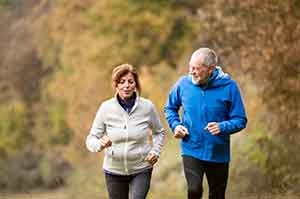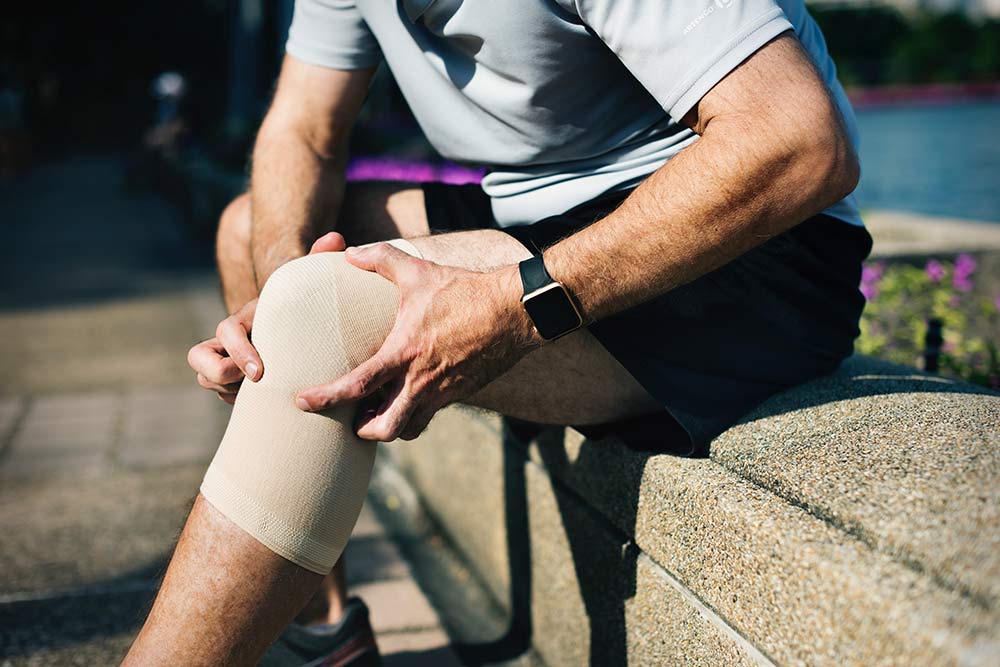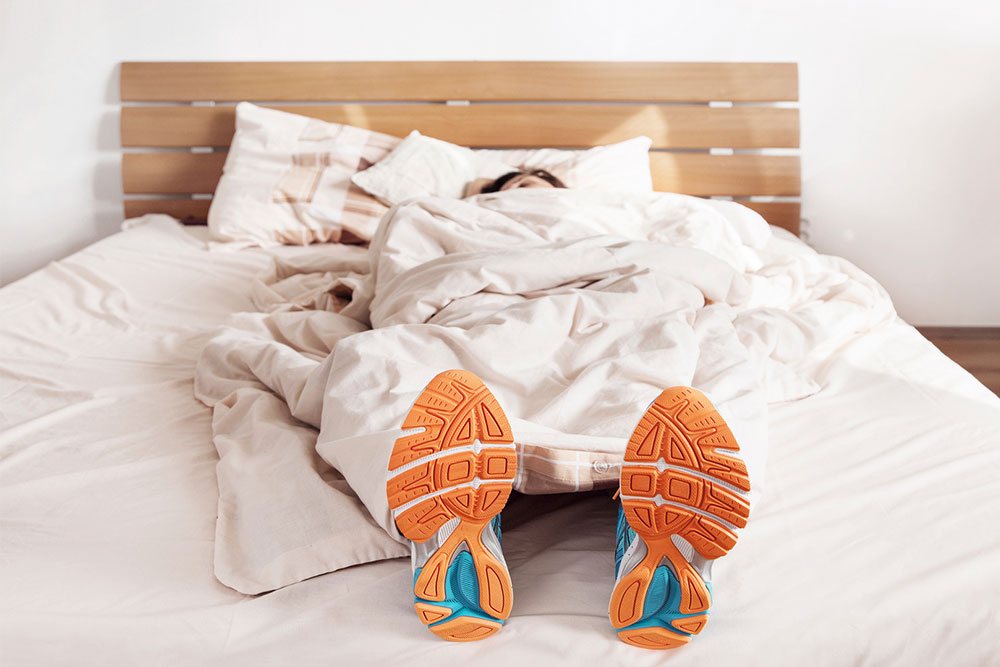Is HIIT Beneficial For Rheumatoid Arthritis?

Gillian White, MSc, Ph.D. (Candidate), University of Toronto, Graduate Department of Exercise Sciences
Rheumatoid Arthritis (RA)
RA is an autoimmune disorder resulting in pain, swelling, and stiffness of joints and has been previously discussed in blogs here and here. It is caused by chronic inflammation of these joints, ultimately resulting in damage, deformity, and loss of function. Although is most commonly affects the joints of the hands and feet, it can also affect larger joints in the body, as well as result in damage and dysfunction to the cardiovascular and respiratory systems. Pain, stiffness, loss of mobility, and fatigue are common symptoms of RA and are common barriers to being physically active.
People who have a genetic risk for RA but are physically active have a 35% lower likelihood of developing the disease (Di Giuseppe et al., 2015). Similarly, those who have RA but are regularly physically active have a higher psychological function, higher physical function (joint mobility, range of motion, and pain), lower symptom severity, and slower disease progression compared with those who have RA and are not physically active. A recent meta-analysis (Sharif et al., 2017) reported that people with RA should exercise at least 20 minutes per day totaling at least 1 hour per week.
Related Article: Autoimmune Illnesses: How To Move When Your Immune System Has Gone Rogue
Make Exercise A Priority
 The type of exercise that is best may depend on specific symptoms. Cardiovascular illness is 1.6x higher in people with RA, therefore, people with lower cardiovascular fitness should make this a priority. Further, rheumatoid cachexia – a condition in which inflammatory processes result in muscle being replaced by fat – can take a significant toll on overall function an quality of life, and should, therefore, be addressed with progressive resistance training if it is an issue. High-intensity interval training (HIIT) has been shown to be safe and effective for people with RA and can increase muscle strength and cardiovascular fitness simultaneously. One study used a twice per week for a 10-week spin program in which participants completed 4 bouts of 4 minutes at 85%-95% of their maximum heart rate (predicted HRmax = 220-age), with 3 minutes at 70% max heart rate between bouts (Sandstad et al., 2015).
The type of exercise that is best may depend on specific symptoms. Cardiovascular illness is 1.6x higher in people with RA, therefore, people with lower cardiovascular fitness should make this a priority. Further, rheumatoid cachexia – a condition in which inflammatory processes result in muscle being replaced by fat – can take a significant toll on overall function an quality of life, and should, therefore, be addressed with progressive resistance training if it is an issue. High-intensity interval training (HIIT) has been shown to be safe and effective for people with RA and can increase muscle strength and cardiovascular fitness simultaneously. One study used a twice per week for a 10-week spin program in which participants completed 4 bouts of 4 minutes at 85%-95% of their maximum heart rate (predicted HRmax = 220-age), with 3 minutes at 70% max heart rate between bouts (Sandstad et al., 2015).
While high-intensity exercise can be beneficial for people with RA, it can sometimes exacerbate fatigue symptoms. Therefore, for people experience acute or chronic fatigue as a symptom of RA, a lower intensity aerobic exercise session may be more appropriate, such as 20 minutes of walking, swimming, or cycling. Lower intensity exercise is also easier to do when the psychological and physical barrier of fatigue is whispering excuses in your ears (for people with and without RA!). For days with high fatigue, putting your shoes on and getting out the door is the goal, and anything beyond that is a bonus!
Related Article: 90 Seconds A Day Of HIIT Might Be All You Need
Workout Plan Recommendations:
General Recommendations: >20 minutes of physical activity daily.
Best exercise: HIIT – 4×4 minutes x 85-95% HRmax with 3 minutes of rest at 70% HRmax done 2-3x/week.
Other exercises:
Aerobic – 25-35 minutes of moderate-intensity aerobic activity (55-75% HRmax) done 3-4x/week
Resistance – 25-35 minutes of resistance training with progressive loads and focus on large muscle groups (i.e. lunges, squats etc.). Start with lower weight and higher repetitions (12-15 reps) for the first 4 weeks and gradually increase to higher weight with lower repetitions (8-10 reps).
Benefits: Lower pain symptoms, improved joint function, increased cardiovascular fitness, and lower risk secondary illnesses like heart disease (RA), osteoporosis (IBD), depression (Fibromyalgia).
Cautions: When fatigue is high, lower intensity aerobic exercise may be more suitable. For IBD, if surgical resection of intestines >10cm, high-intensity exercise should be avoided.
You Might Like:
Everyday Tips To Be More Mindful
Gillian White – MSc, PhD (Candidate), University of Toronto Mindfulness Part II. Everyday tips to be more mindful. As I discussed in the previous article, Mindfulness Part I, the pursuit and practice of mindfulness has...The Jury Is Out | The Best Exercise for Parkinson’s Disease
Gillian White, MSc, PhD (C) University of Toronto, Graduate Department of Exercise Sciences Parkinson’s disease is a neurodegenerative condition affecting 2% of the population over 70 years of age – roughly 6 million people worldwide...Exercise Recommendations For Irritable Bowel Diseases
Gillian White, MSc, Ph.D. (Candidate), University of Toronto, Graduate Department of Exercise Sciences Irritable Bowel Diseases (IBD) include ulcerative colitis (UC) and Crohn’s Disease (CD) and are autoimmune diseases characterized by chronic inflammation of the...Is HIIT Beneficial For Rheumatoid Arthritis?
Gillian White, MSc, Ph.D. (Candidate), University of Toronto, Graduate Department of Exercise Sciences Rheumatoid Arthritis (RA) RA is an autoimmune disorder resulting in pain, swelling, and stiffness of joints and has been previously discussed in...Autoimmune Illnesses: How To Move When Your Immune System Has Gone Rogue
Gillian White, MSc, Ph.D. (Candidate), University of Toronto, Graduate Department of Exercise Sciences Autoimmune disorders – Rheumatoid Arthritis, Irritable Bowel Disease, Fibromyalgia, among others – represent a category of illnesses that are characterized by your...Exercise, Airways, and Sleep Apnea Prevention
Gillian White, H.BSc., M.Sc., PhD (C) University of Toronto, Department of Exercise Sciences As previously discussed in the recent “What’s keeping you awake” article, both acute and chronic exercise has been shown to improve sleep...- Arnold LM, Choy E, Clauw DJ, Goldenberg DL, Harris RE, Helfenstein M et al. (2016) Fibromyalgia and chronic pain syndromes: a white paper detailing current challenges in the field. Clin J Pain. 32(9):737-746.
- Bidonde JBA, Schachter CL, Overend TJ, Kim SY, Goes SM, Boden C, et al. (2017) Aerobic exercise training for adults with fibromyalgia. Cochrane Database Syst Rev.
- Busche AJ, Webber SC, Richards RS, Bidonde J, Shcachter CL, Shafer LA et al. (2013) Resistance exercise training for fibromyalgia. Cochrane Database Syst Rev. 12:Cd010884.
- Clauw DJ. (2014) Fibromyalgia: A clinical review. 311(15):1547-1555.
- Di Giuseppe D, Bottai M, Uitterhoeve R, van Riel P, can Achterberg T. (2015) Physical activity and risk of rheumatoid arthritis in women: a population-based prospective study. Arthritis Res Ther.17(1)
- Hoffman-Goetz L, Pervaiz N, Packer N, Guan J. (2010) Freewheel training decreases pro- and increases anti-inflammatory cytokine expression in mouse intestinal lymphocytes. Brain Behav Immune. 24(7):1105-1115.
- Khalili et al. (2013) Physical activity and risk of inflammatory bowel disease: prosp[ective study from the Nurses’ Health Study cohorts. BMJ [Br Med J].
- McBeth J & Mulvey MR. (2012) Fibromyalgia: mechanisms and potential impact of the ACR 2010 classification criteria. Nat Rev Rheumatol. 8(2):108-116.
- Persson P-G, et al. (1993) Risk indicators for inflammatory bowel disease. Int J Epidemiol. 22(2):268-272.
- Sharif K, Watad A, Bragazzi NL, Lichtbroun M, Amitral H, Shoenfeld Y. (2017) Physical Activity and autoimmune dieases: get moving and manage the disease. Autoimmun Rev. (in press)
- Sandstad J, Stensvold D, Hoff M, Nes BM, Arbo I, Bye A. (2015) The effects of high intensity interval training in women with rheumatic disease: a pilot study. Eur J Appl Physiol.115(10):2081-9.
- van West D, Maes M. (2001). Neuroendocrine and immune aspects of fibromyalgia. 15(8):521-531.










